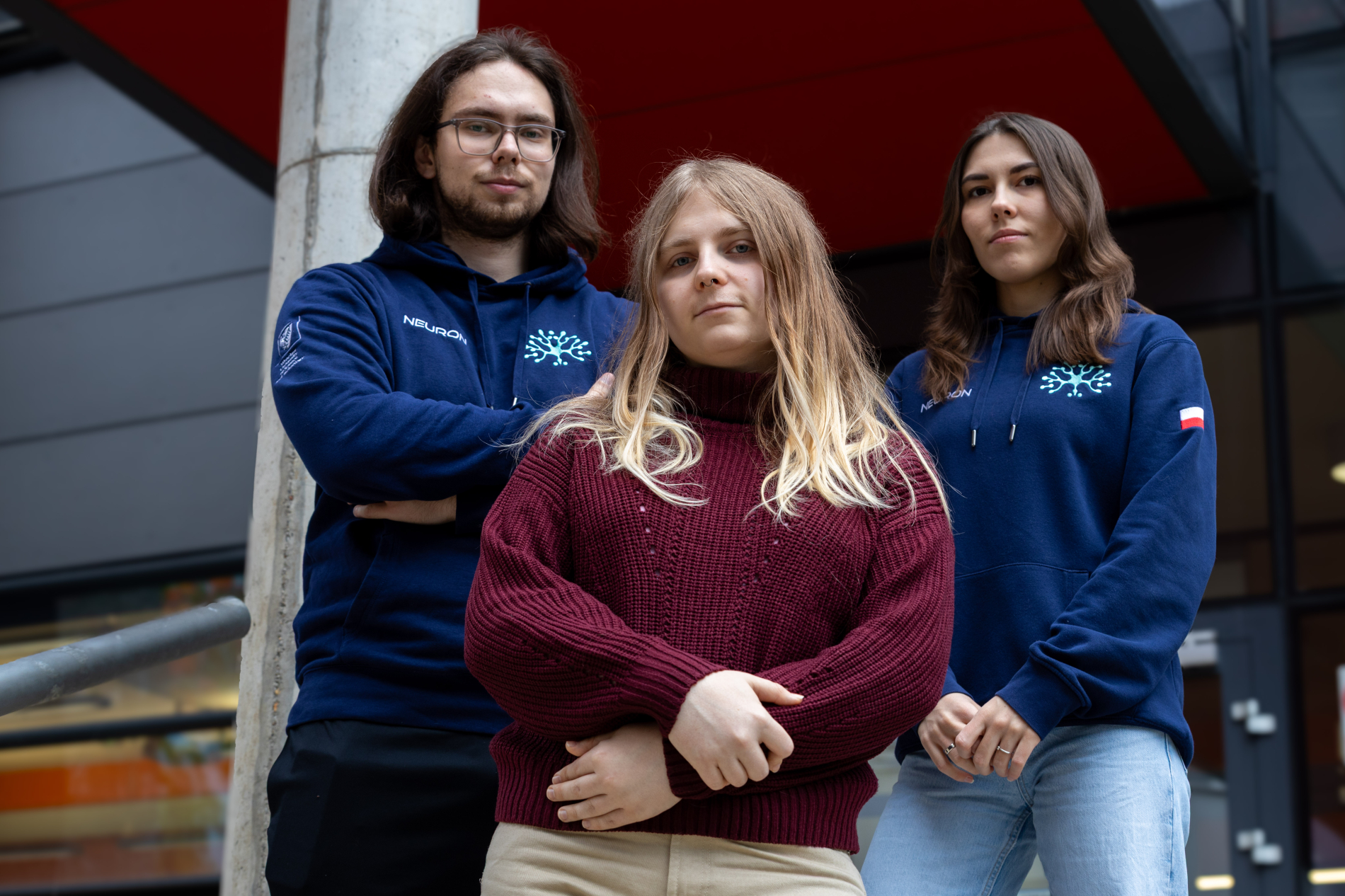 The team consisting of students from the Neuron Strategic Neuroinformatics Student Research Club of at our Faculty reached the finals of the HackYeah hackathon. Our students were ranked in the top 5 best teams in the Biohacking category. Congratulations!
The team consisting of students from the Neuron Strategic Neuroinformatics Student Research Club of at our Faculty reached the finals of the HackYeah hackathon. Our students were ranked in the top 5 best teams in the Biohacking category. Congratulations!
According to the hackathon organizer, HackYeah is more than just a coding marathon. It is the largest stationary hackathon in Europe. It is a 24-hour adventure where creativity meets adrenaline. The event took place on 4–5 October at the Tauron Arena in Krakow. The number of contest participants exceeded two thousand.
The participants included our “Neurons: team. It was composed of: Iuliia Kapustinskaia, Grzegorz Szczepanek, and Camille Lisek, and it made it to finals in the Biohacking category. They managed to get so far owing to their interactive project NEUROtchi, inspired by the iconic Tamagotchi.
– We are very pleased that our project made it to the top 5. In our project, a virtual baby neuron responds to the actual state of the user's mind through EEG analysis. As the user's concentration and mood improve, the neuron develops – from a single neuron to the entire brain – says Iuliia Kapustinskaia.
The team created an EEG framework, a biofeedback system, and a mobile app mock-up in 24 hours.

– We simply put on an EEG headband, send the signals from it to a computer, and interpret them. This allows us to extract the information we want. We can investigate our stress, focus, fatigue, and eye blinking parameters – lists Camille Lisek.
The project promotes healthy habits through tasks, biofeedback, and interactive notifications.
– If the app detects eye strain or prolonged screen staring, it will suggest a break or a mini-game inspired by Flappy Bird, controlled not by classic clicks, but by blinking to relax the eyes and the head – explains Grzegorz Szczepanek.
The Strategic “Neuron” Neuroinformatics Student Research Club consists of software developers and other specialists interested in neuroinformatics. Its members work with brain-computer interfaces, which they use to gather information about brain activity for further processing. Later, they use the information to prepare artificial intelligence models and use them in their applications.

